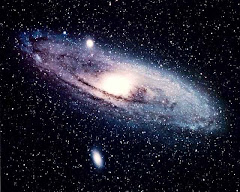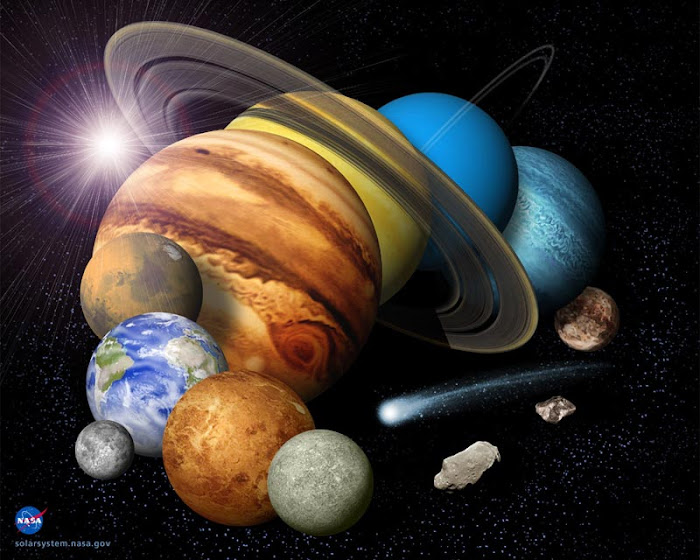The Vision
Climbers ascend a ribbon, 100,000 km long, strung between an anchor on Earth and a counterweight in space. Connecting Earth and space in a way never before possible, the space elevator will enable us to inexpensively and completely expand our society into space. 
Tuesday, November 25, 2008
The Space Elevator
White Hole
 In astrophysics, a white hole is the theoretical time reversal of a black hole. While a black hole acts as a vacuum, drawing in any matter that crosses the event horizon, a white hole acts as a source that ejects matter from its event horizon. The sign of the acceleration is invariant under time reversal, so both black and white holes attract matter. The only potential difference between them is in the behavior at the horizon.
In astrophysics, a white hole is the theoretical time reversal of a black hole. While a black hole acts as a vacuum, drawing in any matter that crosses the event horizon, a white hole acts as a source that ejects matter from its event horizon. The sign of the acceleration is invariant under time reversal, so both black and white holes attract matter. The only potential difference between them is in the behavior at the horizon.
Black hole event horizons can only "suck up" matter, while white hole horizons ostensibly recede from any incoming matter at the local speed of light, so that the infalling matter never crosses. The infalling matter is then scattered and reemitted at the death of the white hole, receding to infinity after having come close to the final singular point where the white hole is destroyed. The total proper time until an infalling object encounters the singular endpoint is the same as the proper time to be swallowed by a black hole, so the white hole picture does not say what happens to the infalling matter. Ignoring the classically unpredictable emissions of the white hole, the white hole and black hole are indistinguishable for external observers.
In quantum mechanics, the black hole emits Hawking radiation, and so can come to thermal equilibrium with a gas of radiation. Since a thermal equilibrium state is time reversal invariant, Hawking argued that the time reverse of a black hole in thermal equilibrium is again a black hole in thermal equilibrium.This implies that black holes and white holes are the same object. The Hawking radiation from an ordinary black hole is then identified with the white hole emission. Hawking's semi-classical argument is reproduced in a quantum mechanical AdS/CFT treatment, where a black hole in anti-de Sitter space is described by a thermal gas in a gauge theory, whose time reversal is the same as itself.
Wormhole
The term wormhole was coined by the American theoretical physicist John Wheeler in 1957. However, the idea of wormholes was invented already in 1921 by the German mathematician Hermann Weyl in connection with his analysis of mass in terms of electromagnetic field energy.
Stephen Hawking
 Born: 8 January 1942
Born: 8 January 1942
Birthplace: Oxford, England
Best Known As: The author of A Brief History of Time.
Fullname: Stephen William Hawking
Stephen Hawking is considered the world's foremost living theoretical physicist. He's an expert on black holes whose stated intention is to unify quantum mechanics with Einstein's general theory of relativity, forming a single theory to explain the origin (and end) of the universe. Hawking, a professor of mathematics at Cambridge University, is the author of the best-selling book A Brief History of Time and something of a celebrity: he has made guest appearances on the TV shows Star Trek and The Simpsons. Hawking has suffered from ALS (amyotrophic lateral sclerosis, also called Lou Gehrig's disease) since he was a young man and is confined to a wheelchair.
In 1979 Hawking took the post of Lucasian Professor of Mathematics at Cambridge. According to Hawking's own site, "The chair was founded in 1663 with money left in the will of the Reverend Henry Lucas, who had been the Member of Parliament for the University. It was first held by Isaac Barrow, and then in 1663 by Isaac Newton."
Further Reading
Stephen W. Hawking's work can best be approached by reading his books, which include Is the End in Sight for Theoretical Physics (1980); A Brief History of Time (1988); and Black Holes and Baby Universes and Other Essays; Sources on Hawking and his work include John Boslough, Stephen Hawking's Universe (1985); Alan Lightman and Roberta Brower, editors, Origins: The Lives and Worlds of Modern Cosmologists (1990); Michael Harwood, "The Universe and Dr. Hawking, " New York Times Magazine (January 1983); Elizabeth Devine, et al., editors, Thinkers of the Twentieth Century (1983); David Blum, "The Time Machine, " New York (October 1988); Kitty Ferguson, Stephen Hawking: A Quest for a Theory of the Universe (1992); Melissa McDaniel, Stephen Hawking: Physicist (1994); Harry Henderson, Stephen Hawking (1995). See also Russ Sampson, "Two Hours with Stephen Hawking, " Astronomy (March 1993); Publishers Weekly (February 12, 1996; March 10, 1997); Michael Lemonick, "Hawking Gets Personal, " Time (September 27, 1993); and Robert J. Deltete, "Hawking on God and Physical Theory, " Zygon (December 1995); Stephen Hawking also has his own web page at http://www.darntp.carn.ac.uk/user/hawking/home.html.


















